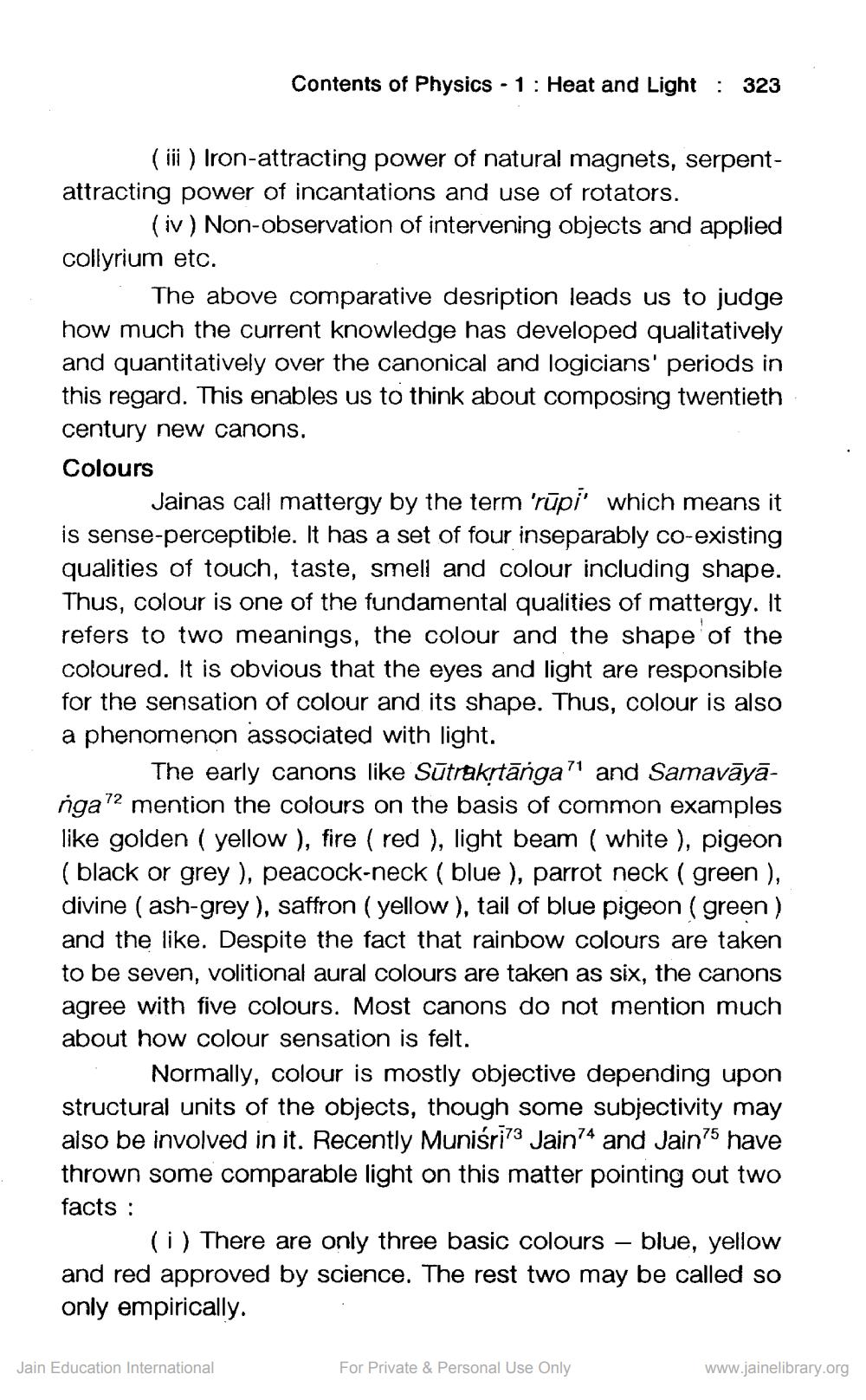________________
Contents of Physics 1 Heat and Light : 323
-
(iii) Iron-attracting power of natural magnets, serpentattracting power of incantations and use of rotators.
(iv) Non-observation of intervening objects and applied collyrium etc.
The above comparative desription leads us to judge how much the current knowledge has developed qualitatively and quantitatively over the canonical and logicians' periods in this regard. This enables us to think about composing twentieth century new canons.
Colours
Jainas call mattergy by the term 'rūpi' which means it is sense-perceptible. It has a set of four inseparably co-existing qualities of touch, taste, smell and colour including shape. Thus, colour is one of the fundamental qualities of mattergy. It refers to two meanings, the colour and the shape of the coloured. It is obvious that the eyes and light are responsible for the sensation of colour and its shape. Thus, colour is also a phenomenon associated with light.
The early canons like Sūtrakṛtānga"1 and Samavāyānga 72 mention the colours on the basis of common examples like golden (yellow), fire (red), light beam (white), pigeon (black or grey ), peacock-neck (blue), parrot neck ( green ), divine ( ash-grey), saffron (yellow), tail of blue pigeon (green) and the like. Despite the fact that rainbow colours are taken to be seven, volitional aural colours are taken as six, the canons agree with five colours. Most canons do not mention much about how colour sensation is felt.
Normally, colour is mostly objective depending upon structural units of the objects, though some subjectivity may also be involved in it. Recently Muniśri73 Jain74 and Jain75 have thrown some comparable light on this matter pointing out two facts:
(i) There are only three basic colours blue, yellow and red approved by science. The rest two may be called so only empirically.
Jain Education International
For Private & Personal Use Only
—
www.jainelibrary.org




